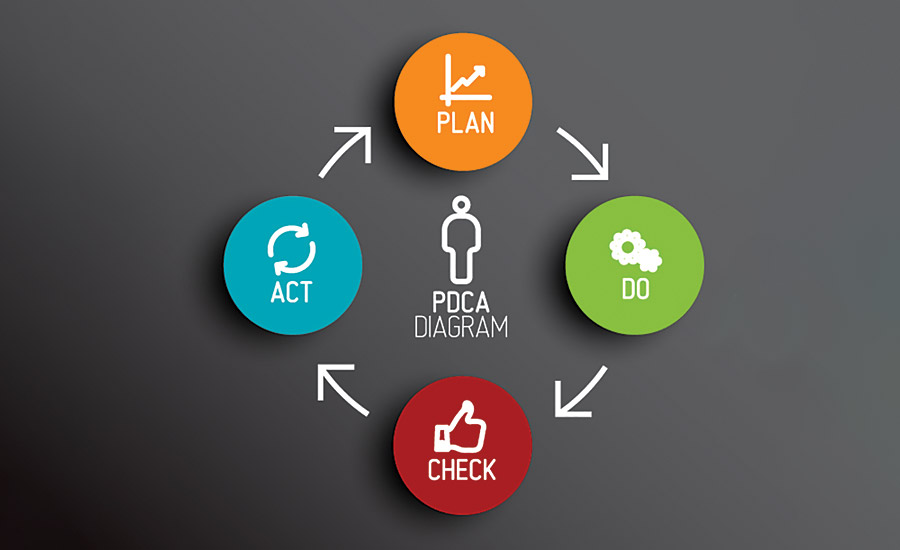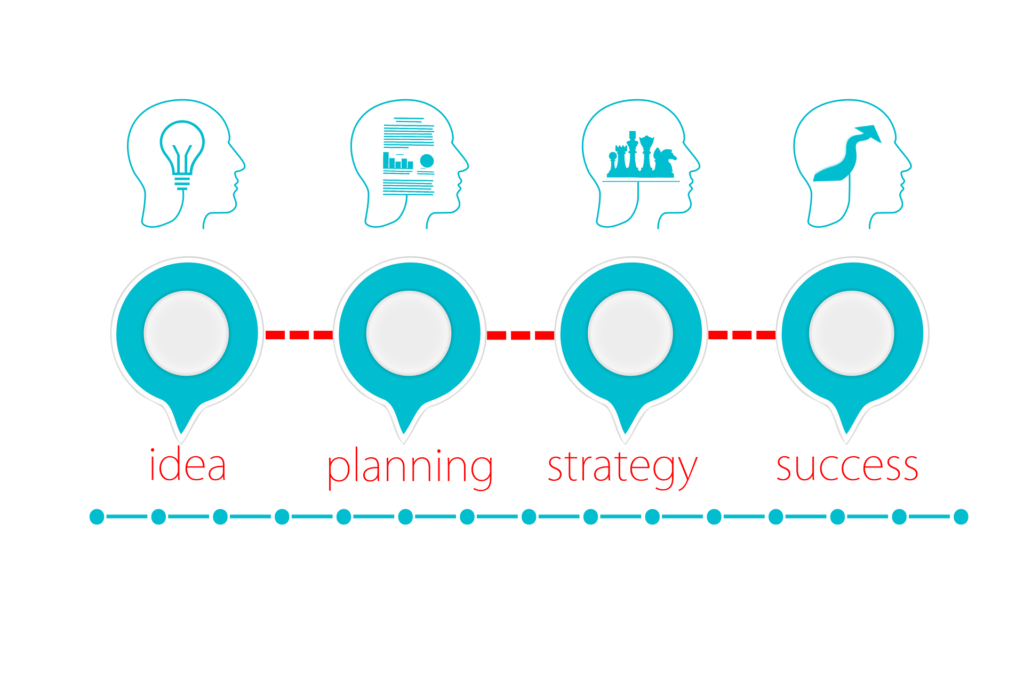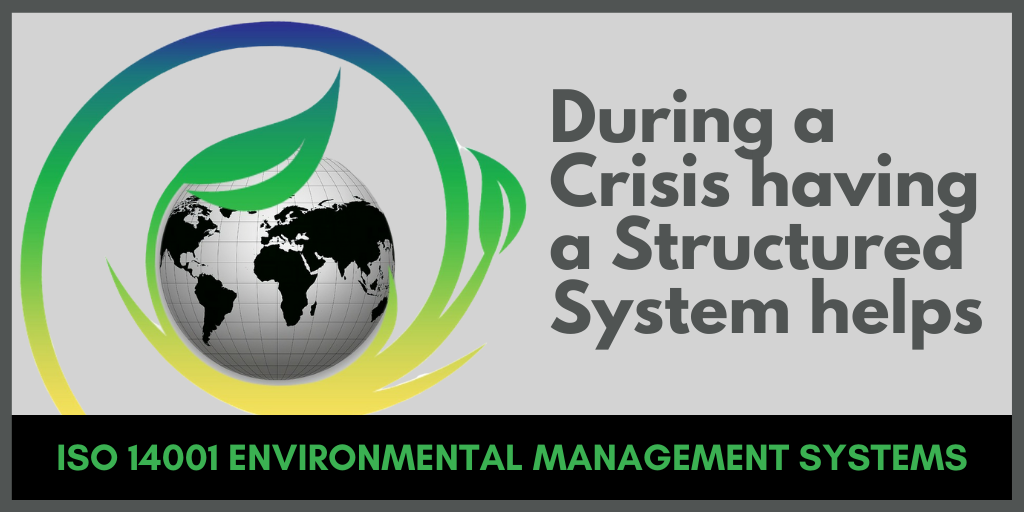Picture this – there is a global pandemic impacting every facet of society. Surrounding you are those who claim they know it all, those who really do know it all and those who are confused, angry or scared. Regardless of who they are, it is up to you to ensure the continuance of operations in a safe and compliant manner. Now, there are two ways this story could go; for the first, turn on the news or look to social media; meanwhile, this insight is going to explore the second option – the importance of systems and structure during these times.
During a Crisis, it is not uncommon to feel confusion and anxiety. These feelings can be overcome by simple and clear instructions such as those found within your management systems. As most of us know, a management system seeks to provide structure and clarity on how a company will achieve its objectives (ISO 2020). Despite the opening paragraph, this insight is not going to explore COVID-19, rather focus on Environmental Management Systems (EMS), their role, and what they bring to a business particularly in a time of Crisis.
What are the requirements of an Environmental Management System?
An EMS is a structured system designed to help organisations manage their environmental impacts and improve environmental performance (Environmental Management Systems 2018). An EMS should be designed to be based specifically on the way a company operates, focusing on production and management and the integration of environmental regulations, rather than compliance itself (A. B.-V. Nicholas P. Cheremisinoff Ph.D. 2001).
An EMS also covers areas such as training, records management, inspections, objectives and policies (Environmental Management Systems 2018). It includes key supporting processes such as those for maintaining awareness of legal requirements, ensuring the competency of employees, providing infrastructure, communicating EMS information and monitoring and evaluating environmental performance. It should establish the provisions for document control, record control and internal auditing (ASQ 2020).

A company may choose to design their own EMS, follow available guidelines (ISO 14000 family – particularly ISO 14001 and 14004) or pursue formal ISO 14001 certification.
A good EMS is alive as it should be continually reviewed and developed. Basically, the development process can be broken down into plan, do, check and act (A. B.-V. Nicholas P. Cheremisinoff Ph.D. 2001, ASQ 2020).
For more information on the
requirements of an EMS, please view the Insight – Effective
Environmental Management Systems.
A Structured Response
An EMS creates a framework for the procedures, responsibilities and processes required to prevent adverse environmental, social and economic impacts (Ravi K.Jain Ph.D. 2016). This means an effective EMS should provide clear actions and a structured approach to ensure conformance with the company’s objectives and regulatory obligations.

In the 21st Century, unless you’re the screenwriter for the Simpsons, one will unlikely be able to predict the consequences of a pandemic, and the flow-on effect it will have on normal business operations. All of a sudden, the relevant personnel may no longer be available to carry out the duties to adhere to compliance measures or be there to respond to an environmental issue. For company’s with an effective EMS, a register should already exist which outlines their legal requirements, compliance schedules, and procedures and processes to assist with a proactive response for conceived situations (P. R. Nicholas P. Cheremisinoff Ph.D. 2008). Despite the complexities brought about by sudden change, the work must go, and companies with an EMS are more likely to weather the storm of a Crisis more effectively.
Benefits of an Environmental Management System
One of the benefits of having a structured system in place is it allows companies to respond to situations proactively. Some of the other benefits of implementing an EMS are (Snezana Zivkovic 2013, WRAP 2015):
- Minimisation or elimination of waste
- Reduction of energy consumption
- Minimisation of harmful effects on the environment
- Improved regulatory performance through the fulfilment of compliance obligations
- Improvement of operational safety
- Improvement of efficiency of materials utilisation
- Improvement in the business, having the potential to reduce costs and increase financial performance
- Environmentally friendly products and services
- Marketing advantages
- Potential to improve public image
- Better work as a result of documented procedures and work instructions
- Managers and employees become more aware of environmental aspects at work and home
Are you thinking about developing an EMS or even checking if your current EMS is effective? Consider completing an EMS Audit for effectiveness or if you require assistance contact Integrate Sustainability on 08 9468 0338 or enquiries@integratesustainability.com.au.

References
14001 Academy. 2019. ISO 14001:2015 vs. 2004 revision – What has changed. Accessed March 2020. https://advisera.com/14001academy/knowledgebase/infographic-iso-140012015-vs-2004-revision-what-has-changed/.
ASQ. 2020. What are Environmental Management Systems (EMS)? American Society for Quality. Accessed April 2020. https://asq.org/quality-resources/environmental-management-system.
AssetInsights.net. n.d. Context of the Organization. Accessed April 2020. https://assetinsights.net/Glossary/G_Context_of_the_Organization.html.
Environmental Management Systems. 2018. What is an environmental management system? Accessed March 2020. http://www.environmentalmanagementsystem.com.au/what-is-an-environmental-management-system.html.
Inc, BQC. 2019. ISO 9000 family – Quality management. Accessed April 2020. https://bqci.com.ph/whats-new/f/iso-9000-family—quality-management.
ISO. 2020. Management Systemt Standards. Accessed March 2020. https://www.iso.org/management-system-standards.html.
ISO Update. 2018. What are the differences between ISO 14001:2015 and ISO 14001:2004. Accessed March 2020. http://isoupdate.com/resources/differences-iso-140012015-iso-140012004/.
Nicholas P. Cheremisinoff Ph.D., Avrom Bendavid-Val. 2001. “The Basics of an EMS: What it is, and why do it.” EMS: Principles and Concepts.
Nicholas P. Cheremisinoff Ph.D., Paul Rosenfeld Ph.D., Anton R. Davletshin. 2008. “A Primer on Responsible Environmental Management.” In Responsible Care, 1-39. Elsevier Inc.
Praxiom Research Limited. 2016. ISO 14001:2015 vs ISO 14001:2004. Accessed March 2020. praxiom.com/iso-14001-new.htm.
Ravi K.Jain Ph.D., P.E.Zengdi Cindy Cui Ph.D., Jeremy K.Domen M.S. 2016. “Chapter 3 – Environmental Management System Implementation in the Mining Industry.” In Environmental Impact of Mining and Mineral Processing, 35-52. Elsevier Inc.
Snezana Zivkovic, Ljiljana Takic, Nenad Zivkovic. 2013. “The Improvement of Environmental Performances by Applying ISO 14001 Standard – A Case Study.” Chemical Industry & Chemical Engineering Quarterly (Association of the Chemical Engineers of Serbia AChE) 19 (4).
WRAP. 2015. Your Guide to Environmental Management Systems. UK: Waste & Resource Action Programma.
Zilahy, G. 2017. “Environmental Management Systems – History and New Tendencies.” Encyclopedia of Sustainable Technologies (Elsevier).

